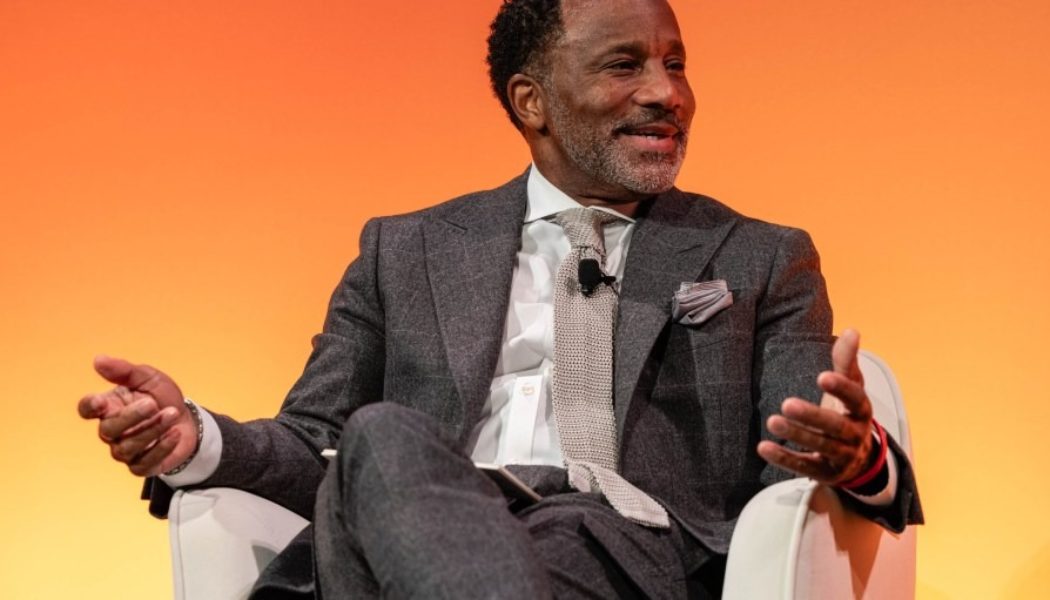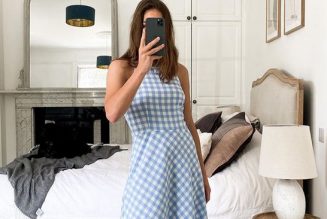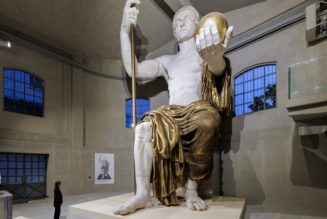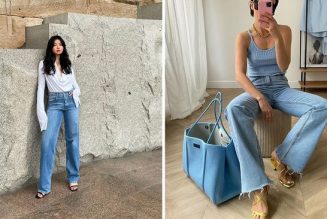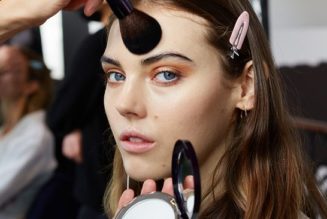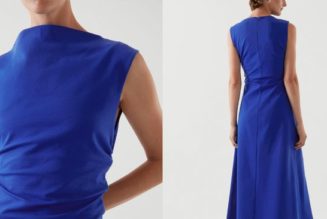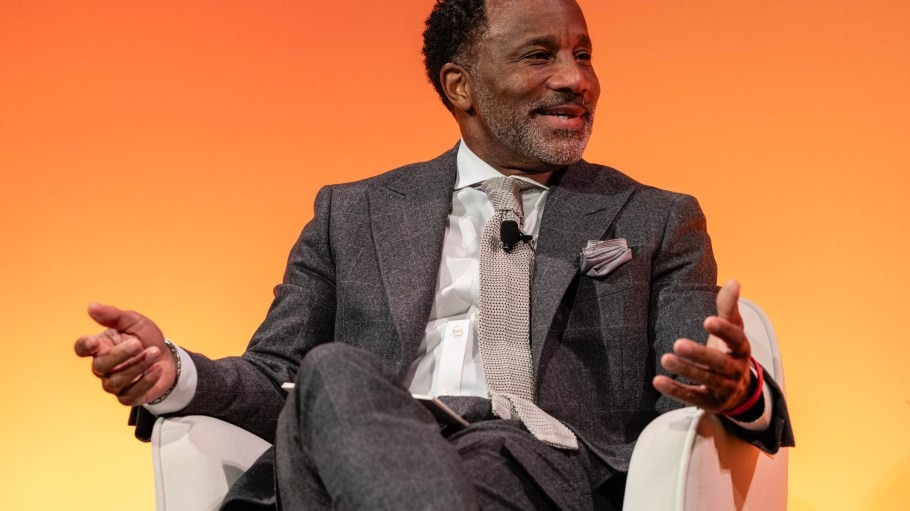
The lessons learned during a one-year stint as the East Coast sales manager for Ralph Lauren women’s collection in the ’90s would mold Jeffrey Tweedy’s career and provide the blueprint for the next generation of influential American lifestyle brands.
“Ralph instills in you that whether you buy a polo shirt for $9.99 or $9,000, his is the one that shows an identity of a certain lifestyle,” Tweedy said during a keynote fireside chat with Sourcing Journal managing editor Jessica Binns in New York. “He stayed true to his consumer. He did what he did best and stayed consistent.”
Tweedy, cofounder and former chief executive officer of Sean John, the Sean “Diddy” Combs streetwear-turned-lifestyle brand, shared how he grew an idea of a brand into one of the fastest-growing men’s sportswear imprints of the 2000s.
“What I was able to do with Sean John and why it was 23 years successful is I sort of utilized the blueprint from Ralph Lauren,” he said. “When I had an opportunity to be in department stores, I took the blueprint of ‘if I do well with 180 square feet, I want 320’….We took that same blueprint, and in Macy’s, we were the third largest real estate owner in men’s for four or five years.”
Following his role at Ralph Lauren and vice president positions at Spike Lee Forty Acre Products and Karl Kani, the FIT alum joined Sean John in 1998 when the brand was still a twinkle in the rapper-turned-fashion mogul’s eye.
It was an unexpected detour for Tweedy, who was in talks with now “Shark Tank” judge Daymond John to join his brand FUBU at the time. The New York streetwear label — founded by John, Keith Perrin, J. Alexander Martin and Carl Brown in 1992 — lacked structure and needed better margins. John made the mistake of mentioning Tweedy to Combs, who immediately convinced Tweedy to take a chance on his vision.
“What was always interesting about [Combs] is that he had a tremendous vision of a brand,” Tweedy said. There was a learning curve, however. “He didn’t understand the market. He didn’t understand how to get it done.” Tweedy recalls how Combs thought brands needed to bring all their inventory to trade shows like MAGIC. “He thought [buyers] took the inventory back on the plane.”
As executive president for seven years, Tweedy led the burgeoning company’s daily operations and oversaw sales, planning and budgets. He also hired the brand’s initial designer. The moves Tweedy made catapulted Sean John into one of the fastest-growing men’s sportswear brands in the U.S., placing the label in major retailers nationwide and ushering in a new market niche, “fashiontainment.”
In 2007, Tweedy became the CEO, a role he would occupy for the next 14 years while maximizing the brand’s online visibility through compelling content and relationships with brand ambassadors. Tweedy left the company in 2021 but remains a brand adviser.
Combs sold a majority stake of Sean John to brand management agency CAA-GBG in 2016. He bought it back for $7.55 million in cash in 2021.
To some degree, Sean John was a product of its time. The ’90s were unique, Tweedy said, because digital communication, fashion and music were combining into one behemoth platform and consumers were open to trying new ideas. He knew Sean John touched a nerve when E! Entertainment Television covered its runway show live in 2003 and when the CFDA named Combs Menswear Designer of the Year in 2004, besting fashion veterans Michael Kors and Ralph Lauren. Sean John achieved another first when it became the first African American young men’s brand to sign a fragrance deal with Estée Lauder.
“We truly didn’t take the word ‘lifestyle’ for granted,” Tweedy said.
Combs had the vision, but it was up to Tweedy to create the strategy and build the team that would reach the company’s targets. His unorthodox and transparent approach to hiring and management at Sean John encouraged departments to break out of silos and learn how other parts of the business functioned. If a T-shirt design only had a 2 percent sell-through, he urged the designer to look at the data to understand why. “There are times that [employees] have to understand that things are uncomfortable, that every day coming into the office can’t be great. But I also enjoyed making sure I had ‘brand champions,’ which means that wherever they went, they spoke highly about Sean John,” he said.
Though nurturing diverse talent is a passion, Tweedy said more must be done to educate students and provide capital for young talent. From helping students prepare portfolios to apply to fashion schools, to hiring the interns companies have already invested in or offering a pragmatic opinion on unscalable designs, Tweedy said, the industry needs to make sure diversity is not a passing trend.
He added that companies should look internally and identify the employees who can manage the C-suite level and expose them to these opportunities.
“Otherwise, they don’t know what to aspire to,” he said.
